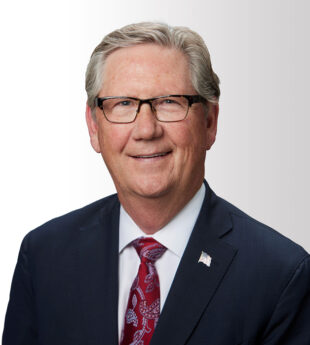HOME | ABOUT US | MEDIA KIT | CONTACT US | INQUIRE
HOME | ABOUT US | MEDIA KIT | CONTACT US | INQUIRE

Kansas City Federal Reserve Bank president Jeffrey Schmid gives first public speech during an event at The Economic Club of Oklahoma City.
Posted February 29, 2024
In his debut public speech, Kansas City Federal Reserve Bank President Jeffrey Schmid said he would remain patient before deciding to cut interest rates and is committed to returning the inflation rate to the Fed’s target of 2 percent.
Schmid became the tenth president of the Kansas City Fed in August 2023. He served as president and chief executive officer of the Southwestern Graduate School of Banking Foundation at Southern Methodist University’s Cox School of Business.

Kansas City Federal Reserve Bank President Jeffrey Schmid. Photo credit: Federal Reserve Bank of Kansas City
“With inflation running above target, labor markets tight, and demand showing considerable momentum, my own view is that there is no need to preemptively adjust the stance of policy. Instead, I believe that the best course of action is to be patient, continue to watch how the economy responds to the policy tightening that has occurred, and wait for convincing evidence that the inflation fight has been won,” Schmid said during his speech at The Economic Club of Oklahoma City.
In January, the Federal Open Market Committee unanimously voted not to raise the federal funds rate from the range of 5.25 to 5.5 percent. The FOMC decided not to adjust the rate for the fourth consecutive month until there was more confidence in reaching a 2 percent inflating rate goal, a thought Schmid echoed in his speech.
“Given the importance of labor costs for many service providers, restoring balance in labor markets and moderating wage growth will likely be needed to secure inflation’s return to the FOMC’s 2 percent target,” he said.
Schmid also cited the “turmoil” in shipping routes through the Red Sea and the Panama Canal could lead to a tighter supply chain and put renewed pressure on goods prices.
In his role as president, Schmid said he has a focus on minimizing the Fed’s financial footprint, particularly through reducing its large balance sheet. According to Schmid, the Fed’s balance sheet increased from less than $1 trillion in 2007 to nearly $9 trillion by 2022.
“The Fed’s actions during both the 2008 Global Financial Crisis and the COVID-19 pandemic included purchasing large quantities of Treasury and agency mortgage-backed securities,” he said. “These purchases increased the size and scope of the Fed’s balance sheet.”
Schmid believes a return to any pre-crisis norm for the Fed’s balance sheet is not realistic, however, lowering the sheet would avoid volatility in interest rates.